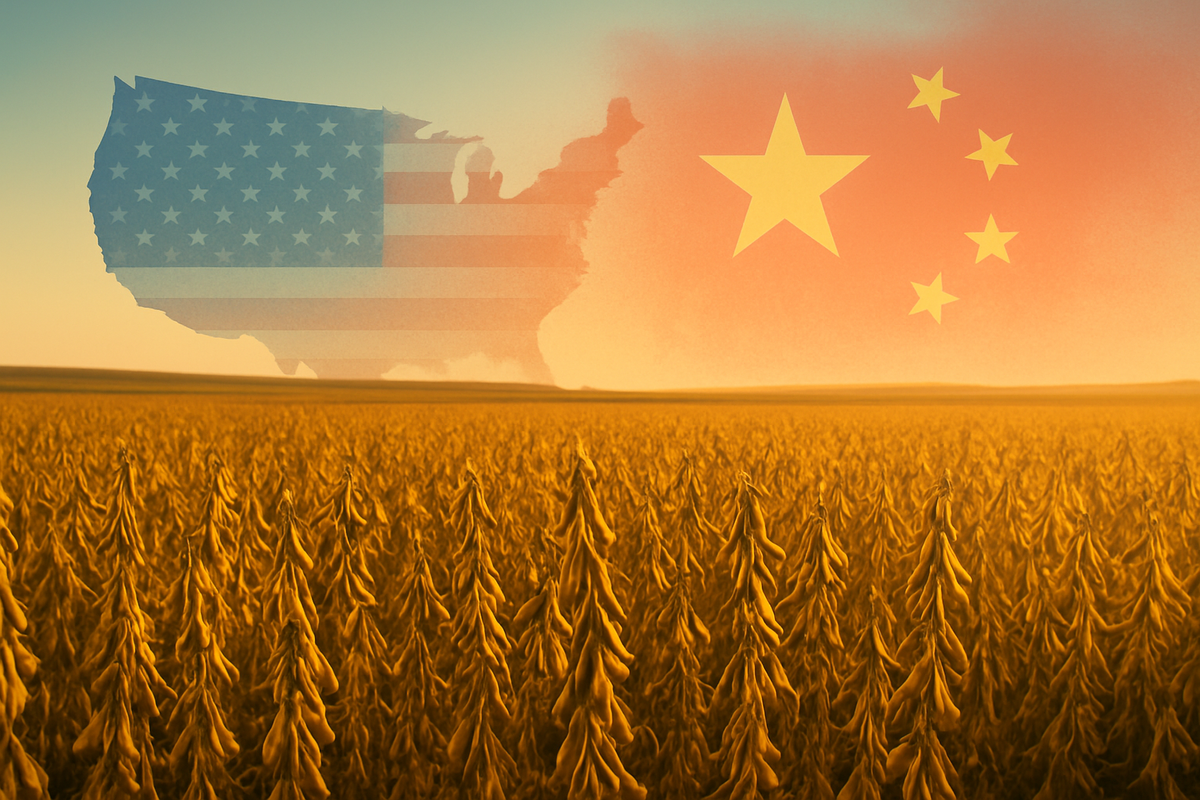
In a move that has sent ripples of cautious optimism through global agricultural markets, China has reportedly purchased its first significant US soybean cargoes of the season. This development, occurring just days before crucial trade negotiations between Washington and Beijing, is being widely interpreted as a potential goodwill gesture, aimed at de-escalating tensions and paving the way for a more constructive dialogue. The purchases, though modest in volume compared to historical levels, have immediately buoyed soybean prices and offered a glimmer of hope to American farmers who have borne the brunt of the protracted trade conflict.
The timing of these acquisitions is particularly noteworthy, preceding high-stakes trade deal talks scheduled for October 30th. While the immediate impact on market sentiment is positive, questions linger regarding the long-term implications for global soybean dynamics, the resilience of the US-China trade relationship, and the strategic intentions behind Beijing's sudden return to the American agricultural market.
A Calculated Purchase Ahead of Crucial Talks
Specific details emerging from the market indicate that China's state-owned COFCO was the primary buyer, securing at least two to three cargoes, amounting to approximately 180,000 metric tons of US soybeans. These shipments are slated for delivery in December and January, marking the first known purchases of the current US harvest season. This move signals a significant shift, as China had largely curtailed its purchases of American soybeans since the onset of the trade dispute, opting instead for supplies from South American nations like Brazil and Argentina.
The timeline leading up to this moment has been characterized by escalating trade tariffs and retaliatory measures, creating immense pressure on both economies. US farmers, in particular, have faced substantial financial hardship due to the loss of their largest soybean market. This recent purchase, therefore, represents a potential turning point after a prolonged period of strained agricultural trade. Key players involved include the US Department of Agriculture (USDA), Chinese state-owned enterprises like COFCO, and the major agricultural trading houses. Initial market reactions have been largely positive; soybean futures in Chicago saw a notable surge, reaching their highest levels in 15 months, driven by renewed hopes for a broader trade agreement. However, analysts quickly tempered enthusiasm, pointing out that 180,000 tons is a relatively small fraction of China's annual soybean demand, which historically exceeded 26 million tons from the US.
Winners and Losers in the Agricultural Arena
The immediate beneficiaries of China's renewed interest in US soybeans are undoubtedly American farmers and agricultural commodity traders. Companies like Archer-Daniels-Midland (NYSE: ADM), Bunge Limited (NYSE: BG), and Cargill (a privately held company) stand to gain from increased trade volumes and improved market sentiment. These agribusiness giants, which are deeply involved in the global supply chain for soybeans, have faced headwinds due to disrupted trade flows. A sustained return of Chinese demand would translate into higher sales volumes, better pricing power, and potentially improved profit margins for their grain origination and processing segments. Farmers, who have seen their incomes slashed and storage bins overflowing, would experience much-needed relief from stronger prices and renewed export opportunities.
Conversely, while the overall market sentiment is positive, the impact on South American suppliers might be a point of concern. Brazil and Argentina significantly ramped up their soybean exports to China during the trade war, filling the void left by the US. A full resumption of US-China soybean trade could potentially reduce China's reliance on these alternative sources, leading to lower demand and potentially softer prices for Brazilian and Argentinian soybeans. However, given China's immense and growing demand, it's more likely that a diversified sourcing strategy will remain, rather than a complete pivot away from South America. Furthermore, companies involved in shipping and logistics that have optimized routes for South American exports might need to adapt to shifting trade patterns.
Broader Implications and Historical Context
This recent soybean purchase fits into a broader industry trend of geopolitical influence on agricultural trade. The event underscores how agricultural commodities, particularly soybeans, have become a significant leverage point in the US-China trade dispute. It highlights China's strategic use of its purchasing power to signal intentions and influence diplomatic outcomes. The potential ripple effects extend beyond direct suppliers and buyers; it could influence global shipping routes, commodity hedging strategies, and even land-use patterns in major agricultural regions.
Regulatory and policy implications are also significant. If these purchases lead to a comprehensive trade deal, it could result in a rollback of tariffs, easing trade restrictions that have impacted a wide array of goods. This could foster a more stable global trade environment, benefiting multinational corporations and consumers alike. Historically, agricultural trade has often been at the forefront of diplomatic efforts between the two nations. For instance, during previous periods of strained relations, agricultural purchases have frequently been utilized as a diplomatic tool to build trust or signal a desire for de-escalation. Comparisons can be drawn to similar gestures made in the early 2000s or during periods of trade friction under various administrations, where agricultural commitments often preceded broader trade agreements. This event reinforces the notion that agricultural trade is not merely an economic transaction but a powerful diplomatic instrument.
What Comes Next: A Path Forward
In the short term, all eyes will be on the upcoming trade talks on October 30th. The success or failure of these negotiations will largely dictate the immediate trajectory of US soybean exports to China. A positive outcome could see further, more substantial purchases, providing a significant boost to the US agricultural sector. Conversely, a breakdown in talks could quickly reverse the current optimism, potentially leading to renewed trade hostilities and a return to the challenging market conditions seen previously.
Long-term possibilities include China continuing to diversify its soybean sources, even if a trade deal is struck. Beijing has consistently expressed a desire to reduce its reliance on any single supplier. This could mean that while US soybeans will regain market access, they might not reclaim their pre-trade war dominance. Strategic pivots for US farmers might involve exploring new export markets or adapting crop rotations to reduce over-reliance on soybeans. For global agribusinesses, the challenge lies in maintaining flexible supply chains that can adapt to rapid shifts in geopolitical dynamics and trade policies. Market opportunities could emerge in developing value-added soybean products or exploring alternative protein sources. Potential scenarios range from a full-scale trade détente, leading to a robust recovery in US agricultural exports, to a continued tit-for-tat trade skirmish, maintaining market volatility and uncertainty.
A Cautious Optimism for the Market Ahead
China's purchase of US soybean cargoes ahead of crucial trade talks is a clear signal of intent, offering a moment of cautious optimism in an otherwise turbulent trade relationship. The key takeaway is that agriculture remains a central pillar in US-China relations, serving as both a point of contention and a potential bridge for reconciliation. While the initial market reaction has been positive, the modest volume of purchases underscores that a full recovery of pre-trade war export levels is not guaranteed and will depend heavily on the outcome of ongoing negotiations.
Moving forward, the market will assess whether this is a one-off goodwill gesture or the beginning of a sustained re-engagement. Investors should closely watch for any further announcements regarding agricultural purchases, the tone and outcome of the trade talks, and any concrete steps towards tariff reductions. The resilience of the global agricultural supply chain, the strategic decisions of major trading nations, and the evolving dynamics of international diplomacy will all play crucial roles in shaping the future of this vital commodity market. The coming months will be critical in determining whether this olive branch blossoms into a lasting peace or merely wilts under renewed trade pressures.
This content is intended for informational purposes only and is not financial advice






